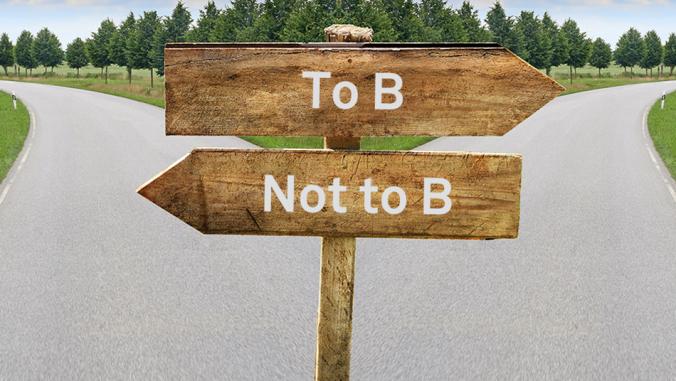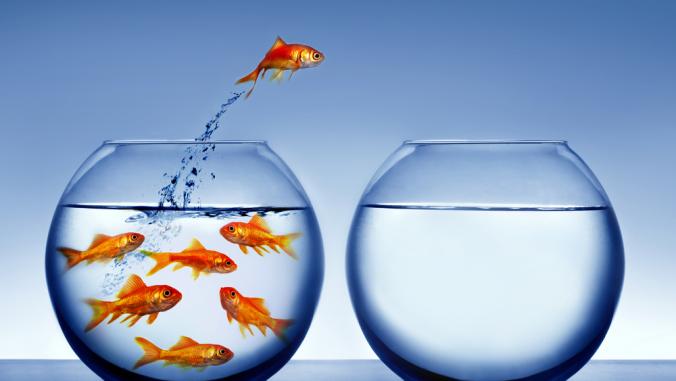What Business Can Learn About Sustainability from Sea-Monkeys
<p>The same science that lets brine shrimp stay alive for weeks in the mail is also behind a startup that could change the market for delivering medicine and other perishables.</p>

If you were one of those kids who looked forward to science class, you probably remember Sea-Monkeys.
I wasn't into science but, as I recall, you could order Sea Monkeys from the back page of a comic book. According to Wikipedia, Sea Monkeys are the brand name for a
variant of brine shrimp… a species which enters cyptobiosis, a natural state of suspended animation, allowing their cysts (dormant saclike embryos) to be distributed and sold as a dry powder. When the "eggs" are poured into saltwater, the Sea-Monkeys start to come out of their cysts.
Now, it turns out, the coating that kept the brine shrimp alive can do more than entertain science geeks on a Saturday night. Its properties have inspired a startup company called Biomatrica, which makes a "room temperature stabilization technology" used to preserve vaccines and other medicines that would otherwise have to be refrigerated. Don't ask me to explain how the science works -- yes, I should have paid more attention back in high school -- but I can tell you that this product is potentially a very big deal. Think of how it can help overcome the challenges of delivering medicine to the many places in the world without an electricity grid, where keeping them reliably cold is all but impossible.

The story of Biomatrica, one of a number of companies using a practice known as biomimicry to drive innovation and become more sustainable, was recounted yesterday by Janine Benyus, the biologist who dreamed up the idea of biomimicry. She now leads a consulting firm and a nonprofit to spread its ideas; their website defines biomimicry as" an emerging discipline that studies nature's best ideas and then imitates these designs and processes to solve human problems."
Janine spoke on a panel today at the first GreenBiz Innovation Forum, a two-day event intended to help business rethink their products, processes and business models to make them more sustainable. She was joined by John Warner, the president of the Warner Babcock Institute for Green Chemistry.
Benyus and Warner are among the most original, creative and inspiring thinkers you'll find anywhere in the sustainability world. They made a bit of news during the GreenBiz event by disclosing that they will be working together in the future, at least for certain clients. They're both big thinkers: This is a crude way of putting it, but Benyus and Warner are trying to transform industry to become more like nature and less like, well, industry -- by using more benign materials and processes, by becoming more efficient and generating less waste.
Green chemistry, Warner explained, "is a science of active pollution prevention." His institute works in a variety of industries–solar energy, industrial chemicals, pharmaceuticals, personal care and cosmetics–to reduce or eliminate substances that are hazardous to human health or to the planet. His institute says:
Green Chemistry presents industries with incredible opportunity for growth and competitive advantage. This is because there is currently a significant shortage of green technologies: we estimate that only 10 percent of current technologies are environmentally benign; another 35 percent could be made benign relatively easily. The remaining 65 percent have yet to be invented!
The benefits to consumers and to the environment of green chemistry are obvious. Business gains because if hazardous materials are eliminated from products or manufacturing processes, the cost of disposing and handling those materials should disappear as well. "If you render the molecules safe in the first place, you don't have the expense of exposure controls." Warner said most major chemical firms are at least dabbling in green chemistry, and some are taking it very seriously.

Benyus's Biomimicry Institute, meanwhile, has a long list of blue-chip clients including GE, Hewlett Packard, DuPont, Kraft, General Mills, Johnson & Johnson, Nike and Procter & Gamble. Its success stories are not quite as numerous–they include a new city in India called Lavasa being designed by HOK architects (See Building Design, Inspired by Nature at Fortune.com), an Interface carpet tile whose design was inspired by the "organized chaos" of the forest floor and a self-cleaning paint modeled on the lotus plant, whose leaves are covered with tiny points that keep dirt away from its surface so it can be washed away by rain.
Interesting, Benyus and Warner burst onto the sustainability scene at about the same time with books that took on traditional ways of thinking. Benyus's Biomimicry: Innovation Inspired by Nature was published in 1997. Green Chemistry: Theory and Practice, by Warner and Paul Anastas (a Yale prof who is now science advisor to EPA), was published in 1998.
More than a decade later, it makes you wonder: Why haven't their ideas been adopted more broadly? Why are we still living with so much wasteful design and so many toxic chemicals? Partly, I think, it's because true innovation -- radical, disruptive, transformational innovation of the kind that's need to drive sustainability -- is very hard for big companies to do. Why? I'll be exploring that problem on a panel tomorrow with big and small company executives, and report back later on what we learn.
GreenBiz.com Senior Writer Marc Gunther is a longtime journalist and speaker whose focus is business and sustainability. Marc maintains a blog at MarcGunther.com. You can follow him on Twitter @marcGunther.





